 As of July 1st, Alleghenies United Cerebral Palsy will no longer have phone extensions for most of our staff. If you would like to contact your Service Coordinator, you will be able to contact them via their company cell phone. All phone numbers are now listed here on our website. You can also call our main office at 844-819-4455 to be transferred to your Coordinator.
As of July 1st, Alleghenies United Cerebral Palsy will no longer have phone extensions for most of our staff. If you would like to contact your Service Coordinator, you will be able to contact them via their company cell phone. All phone numbers are now listed here on our website. You can also call our main office at 844-819-4455 to be transferred to your Coordinator.
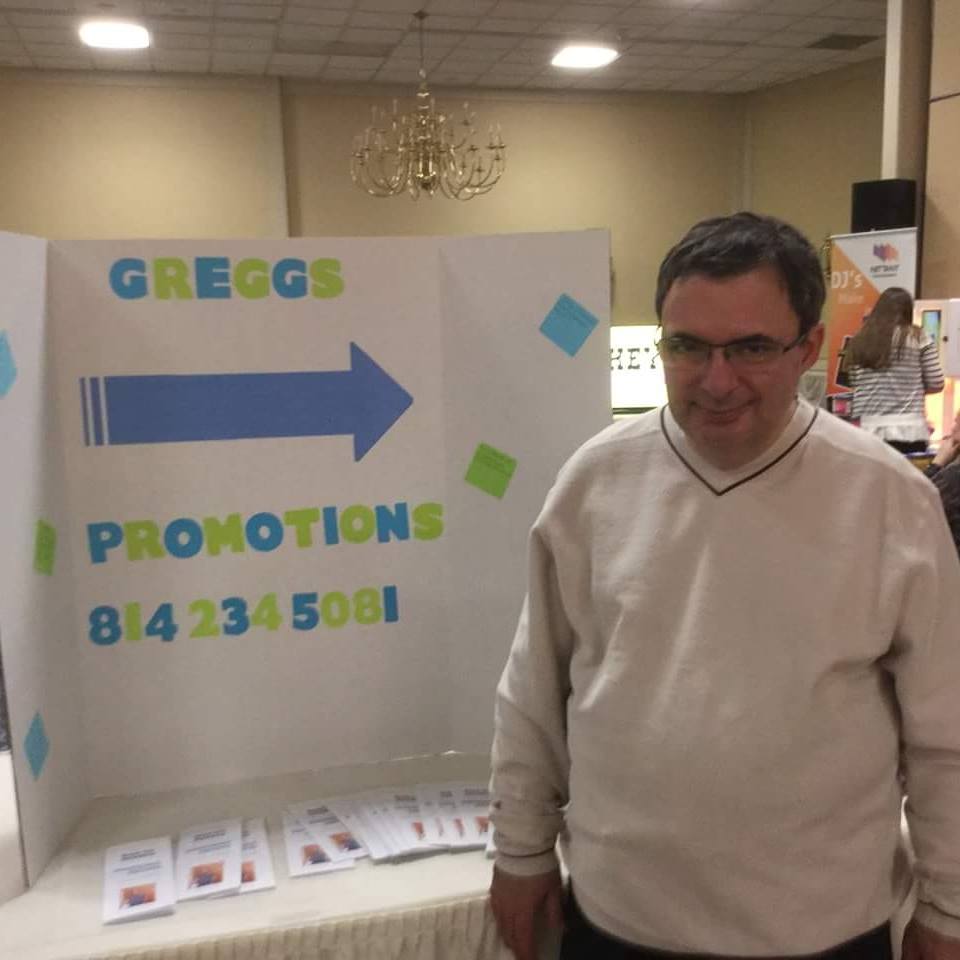
Gregg Sheaffer is a 52 year-old from State College, PA. Gregg has been a participant on our Autism Waiver for about 9 years and this month we would like to introduce you to him.
If you are in State College around Penn State University, you might see Gregg walking around handing out flyers and coupons to the public. That’s because 8 years ago Gregg began his own company called “Gregg’s Promotions.” It all started because he enjoyed volunteering to hand out flyers, so he decided to make a job out of it. Today, he has a plethora of business clients that give him wonderful reviews and know him as being dependable and polite. Gregg’s favorite parts of his job are walking around the community and getting to see and talk to people. He receives a lot of support from his community, friends, and family.
If you’re interested in learning more about Gregg’s business or to contact him, you can visit his Facebook page.
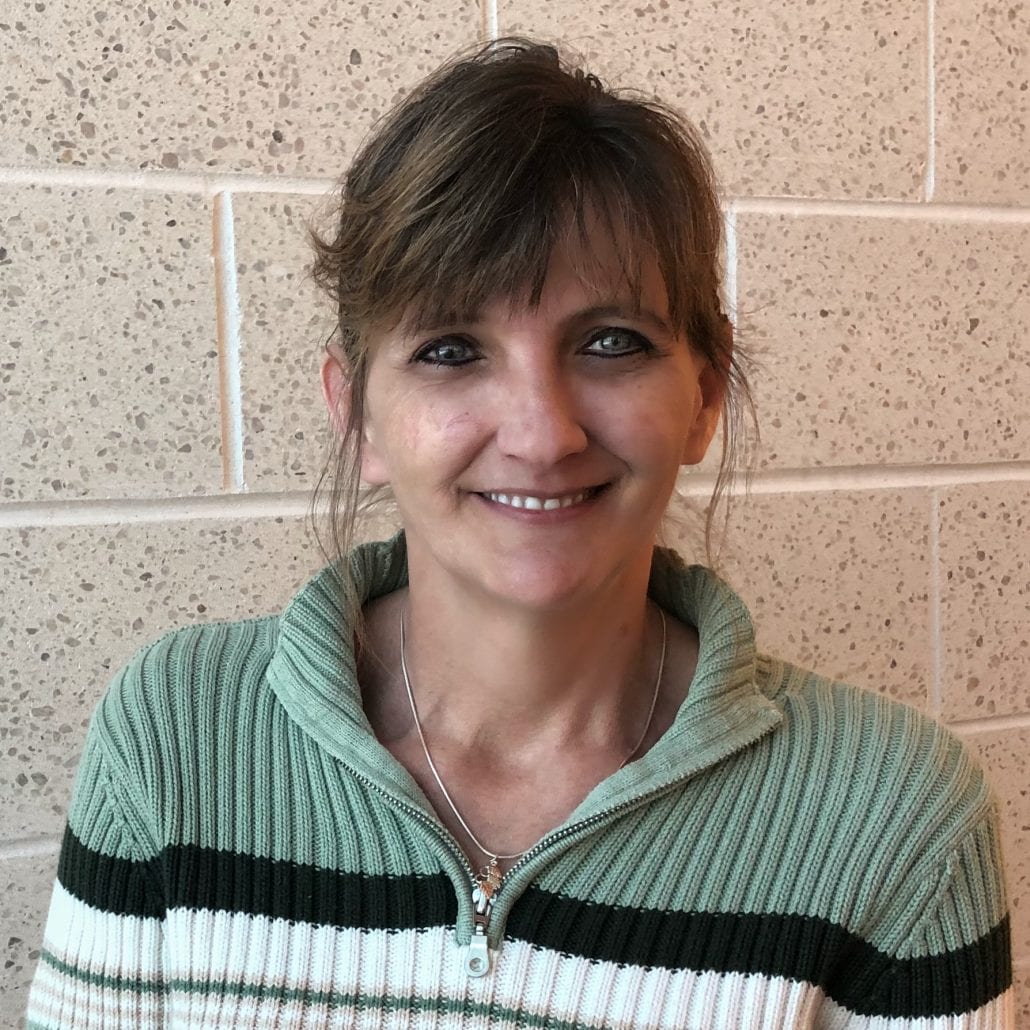
This month, we are happy to introduce you to Valerie Johnston. Valerie has been a Service Coordinator with AUCP for the past five and a half years, working out of her home in Clearfield county. The Johnstown office gets the pleasure of seeing Valerie at least once a week when she travels to the office to work.
Valerie graduated from Indiana University of Pennsylvania (IUP) with a dual major in Psychology and Criminology. She has been married to her husband, Dale, for 31 years and together they have a daughter, Alysia, and a son, Justin. If it were up to Valerie, she would be full-time “Mammy J” to her grandson, Nash. When she’s not busy with work and chasing her grandson around, Valerie enjoys gardening, four-wheeling, traveling, and striving to be happy and worry less.
Currently, Valerie serves Clearfield, Jefferson, Centre, Clinton, Clarion, Lycoming and Forest counties. She says she loves being a Service Coordinator and enjoys working with her participants and their family members. The most challenging part of her position is keeping up with the paperwork and notes that accompany the work.
Valerie is funny and is a team player. She is quick to offer assistance to other staff and is very knowledgeable about the job and services provided.
On Sunday, June 2nd, cancer survivors and supports will come together to celebrate life and raise awareness on National Cancer Survivors Day.
A few of our staff members have been touched in significant ways by cancer and this year we would like to honor them for their strength and determination in battling their cancer diagnoses. Click on their names below to read their full story.
Tina Trimbath, Hodgkin’s Lymphoma
Katelyn McClain, Breast Cancer
Linda Freidhoff, Breast Cancer
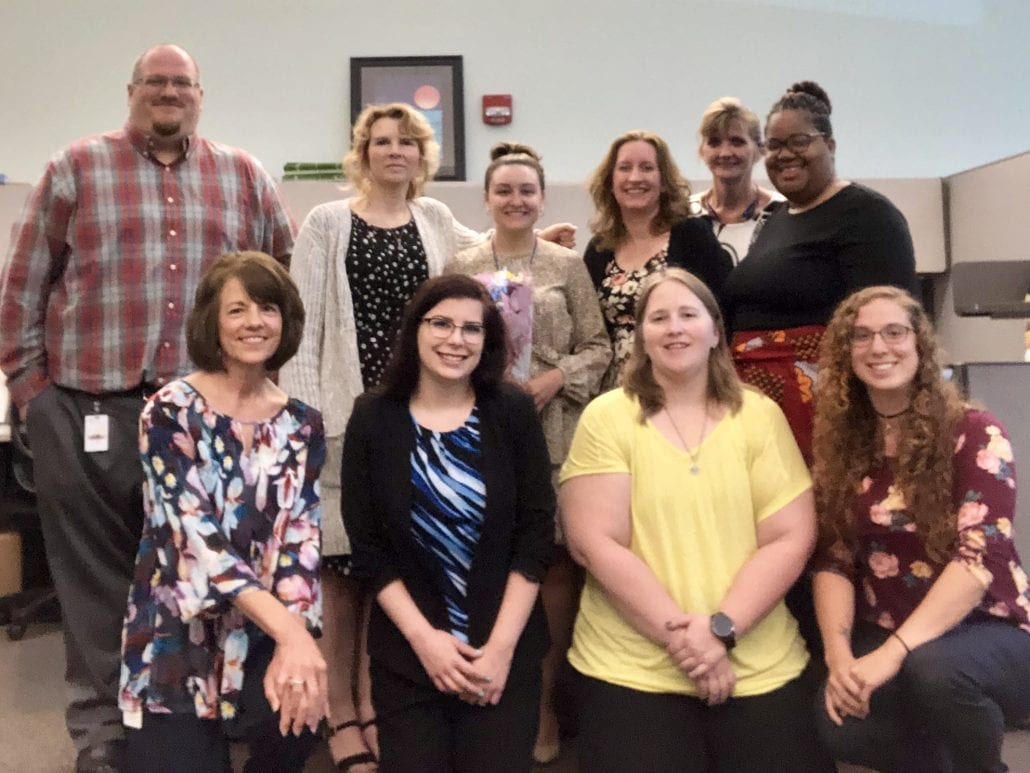
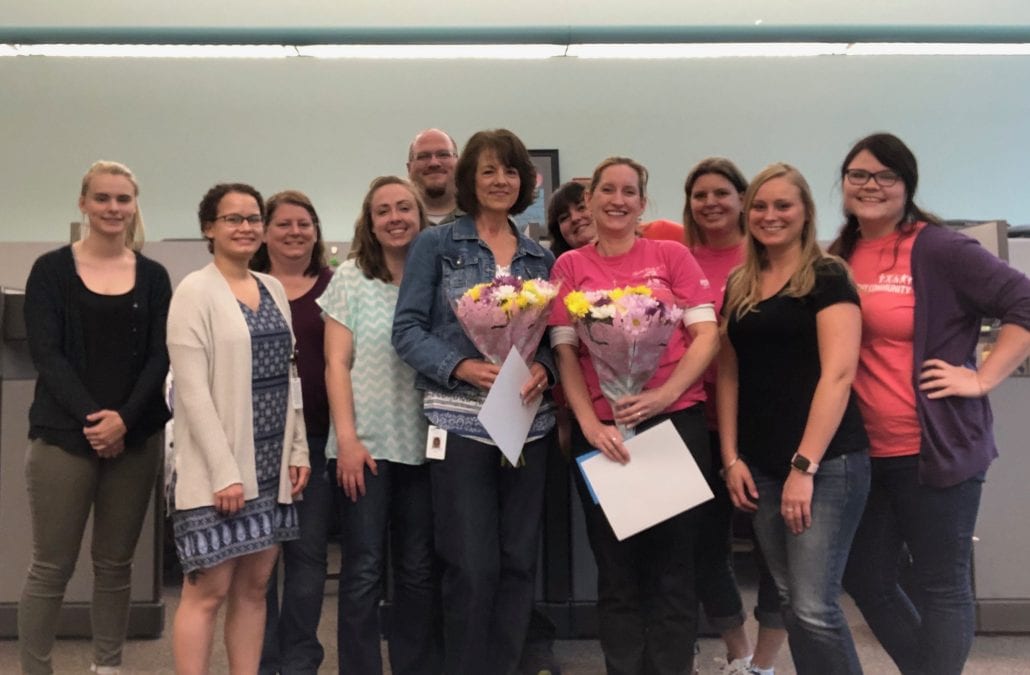
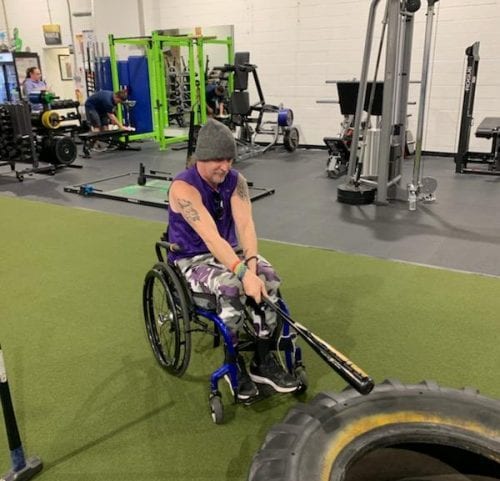 Kenneth “Kenny” Dyer, a 53 year-old, father of three, from the South Hills of Pittsburgh lived his life without expecting to one day be diagnosed with Multiple Sclerosis (MS), “an unpredictable, often disabling disease of the central nervous system that disrupts the flow of information within the brain, and between the brain and body.” However, you could ask ten different people living with MS about how it is affecting their lives and you would get ten different stories.
Kenneth “Kenny” Dyer, a 53 year-old, father of three, from the South Hills of Pittsburgh lived his life without expecting to one day be diagnosed with Multiple Sclerosis (MS), “an unpredictable, often disabling disease of the central nervous system that disrupts the flow of information within the brain, and between the brain and body.” However, you could ask ten different people living with MS about how it is affecting their lives and you would get ten different stories.
For Kenny, he went 5 to 6 years without any diagnosis just assuming that the symptoms he was having were as a result of stress and getting older. However, in 2016 he was diagnosed with an aggressive form of the disease. Within two years he was bound to a wheelchair, had to stop working, and relocated to Westmoreland, PA to live with his sister because he was unable to live independently.
Prior to his diagnosis, Kenny’s middle son, who was around 11 at the time, was diagnosed with cancer. Kenny remembers telling his son everyday “you are gonna get up, you are gonna fight, and you are going to win.” Kenny did not realize that one day he was going to have to practice what he preached. He decided he was not going to “curl up in a ball” and let the disease take control, he was going to continue making the best of his life. Even though he is inconvenienced by a wheelchair, he realizes that it could be much worse and that some people would give their lives to be in the position that he’s in.
One of the best compliments that he has ever received was from a friend saying, “the biggest difference between you (Kenny) and other people living with MS is that you are not giving up.” Each day, Kenny gets up and goes about his day, he gets to the gym three days a week, and does not allow himself to make excuses.
Currently, Kenny’s MS is stabilized with the help of medication and infusions. His goal is to one day not need a wheelchair and begin using a walker or cane. He wants people to remember him as someone who doesn’t quit and is able to make people smile. When asked what advice he would give to the past Kenny, it would be to go to the doctor, so many things he faces today could have been prevented if he would have just followed the warning signs. Advice that he would offer to anyone recently diagnosed with MS is that “It’s not a death sentence. Yes, it’s a life sentence, but it’s not the end.”
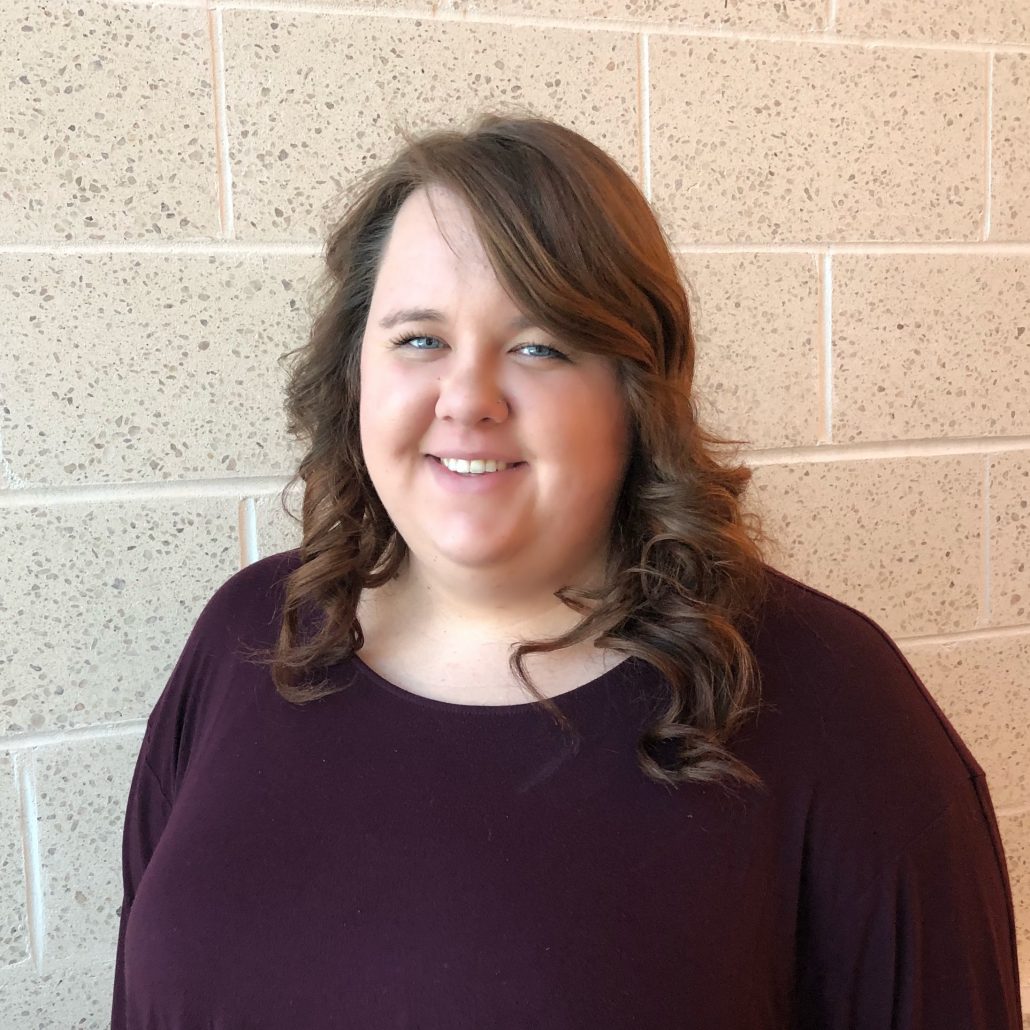 For the month of June, we would like to introduce you to Teil Uhring, a Service Coordinator out of our Pittsburgh office serving Allegheny County through UPMC Community HealthChoices. Teil graduated from Clarion University with her B.S. in Rehabilitative Sciences, is currently working towards her M.S. in Clinical Counseling, and hopes to one day obtain a Ph. D. When she is not busy with work and school, Teil enjoys reading, cooking, and being outside as much as possible.
For the month of June, we would like to introduce you to Teil Uhring, a Service Coordinator out of our Pittsburgh office serving Allegheny County through UPMC Community HealthChoices. Teil graduated from Clarion University with her B.S. in Rehabilitative Sciences, is currently working towards her M.S. in Clinical Counseling, and hopes to one day obtain a Ph. D. When she is not busy with work and school, Teil enjoys reading, cooking, and being outside as much as possible.
Teil has worked at AUCP for two years now and aside from helping people, she loves the team approach that we offer and the support system it offers to the staff. The most challenging part about being a service coordinator is remembering that they are not to fix problems for the participants, but rather provide the tools to do so. If she were not a service coordinator, Teil would like to work with at-risk adolescents or in a women’s shelter.
Teil is known as being diligent and great with critical cases. She is a fantastic trainer and peer to her colleagues. All of us agree that she is a valuable part of our AUCP family and are excited for all that her future has in store.

We had a great turn out at the Highmark Walk event on Saturday, May 18th at the Altoona Curve Stadium and reached all of our goals! Thank you to each person, agency, staff member, family member, and friend that made a donation, we could not have done it without you!
We raised a total of $6,301 (including donations from 11 different agency partners and 48 individuals), a grand total of 69 walkers (virtually and in-person), with 47 walkers on the day of the event, and 9 teams!
If you didn’t have a chance to make a donation, there’s still time! The donation portal will remain open until June 28th. Click here to make your donation!
Summer is coming! It’s that time of year when many people spend more time outdoors and that means more exposure to ultraviolet (UV) rays from the sun. Skin Cancer Prevention Month helps raise awareness about the dangers of unprotected skin exposure and the importance of practicing sun protection to help prevent skin cancer. Without protection, the sun’s UV rays can damage your skin in as little as 15 minutes. Skin damage, such as sunburns and tanning, can increase your risk of skin cancer. Damage to your skin from exposure to UV rays adds up over time, so starting sun protection at an early age is important. If you haven’t included sun protection in your daily routine, it’s not too late to start. As you prepare for the upcoming summer holidays, make sure sun protection is included so that you can enjoy outdoor activities safely. Learn more about protecting your skin this summer and beyond.
Nearly 5 million people are treated for skin cancer each year in the United States. Skin cancer can be serious, expensive, and sometimes even deadly. Fortunately, most skin cancers can be prevented.
Stay Sun Safe Outdoors
- Seek shade, especially during midday hours. This includes 10 am to 4 pm, March through October, and 9 am to 3 pm, November through February. Umbrellas, trees, or other shelters can provide relief from the sun.
- Be extra careful around surfaces that reflect the sun’s rays, like snow, sand, water, and concrete.
- Wear sun protection gear like a hat with a wide brim and sunglasses to protect your face and eyes.
- Sunglasses protect your eyes from UV rays and reduce the risk of cataracts and other eye problems. Wrap-around sunglasses that block both UVA and UVB rays offer the best protection by blocking UV rays from the side.
- Wear a long-sleeved shirt and pants or a long skirt for additional protection when possible. If that’s not practical, try wearing a T-shirt or a beach cover-up.
- Apply a thick layer of broad spectrum sun-screen with an SPF of 15 or higher at least 15 minutes before going outside, even on cloudy or overcast days. Reapply sunscreen at least every 2 hours and after swimming, sweating, or toweling off.
UV rays are strongest :
- During midday
- Near the equator
- During summer months
- At high altitudes
Remember that sunburns and skin damage can occur even on cloudy or overcast days. If you’re unsure about the sun’s intensity in your area, check the daily UV Index for your zip code on the US Environmental Protection Agency’s website.
Indoor Tanning and Sunbathing
Indoor tanning and sunbathing often begin in the teen years and continue into adulthood. Don’t wait to teach your children about the dangers of tanning. Children may be more receptive than teens, so start the conversation early, before they start sunbathing or indoor tanning.
For example, you can:
- Help preteens and teens understand the dangers of tanning so they can make healthy choices.
- Talk about avoiding tanning, especially before special events like homecoming, prom, or spring break.
- Discourage tanning, even if it’s just before one event like prom. UV exposure adds up over time. Every time you tan, you increase your risk of getting skin cancer.
- Exposes users to intense levels of UV rays, a known cause of cancer.
- Does not offer protection against future sunburns. A “base tan” is actually a sign of skin damage.
- Can spread germs that can cause serious skin infections.
- Can lead to serious injury. Indoor tanning accidents and burns send more than 3,000 people to the emergency room each year.
The US Food and Drug Administration states that indoor tanning should not be used by anyone younger than age 18. Many states restrict the use of indoor tanning by minors.
There’s no such thing as a safe tan!
Choose Sun-Safety Strategies that Work
Broad spectrum sunscreen with an SPF of 15 or higher is important, but it shouldn’t be your only defense against the sun. For the best protection, use shade, clothing, a hat with a wide brim, and sunglasses, as well as sunscreen.
For more information, visit CDC’s Sun Safety Website
To view a PDF version of this article, click here.
If you have not walked distances for some time, you should start slowly. Increase the length and pace of your walk gradually. Here are some tips on how to get started and how to prepare for walking.
- Warm-up activities – start slowly, do a few warm-up exercises and stretches first. Don’t walk immediately after a big meal.
- Build activity slowly – start with a 20 minute walk then increase gradually. Try to walk at least three times per week.
- Use the correct technique – walk at a steady pace, swing your arms freely and stand as straight as you can. Your feet should step in a rolling action from the heel to the toe.
- Shoes and socks – wear thick comfortable cotton socks. Sensible, comfortable and lightweight shoes with support are best.
- Weather – wear suitable warm, light clothing in the winter and cool, comfortable clothes in the summer. Don’t forget your sunscreen and hat!
- Water – drink water before and after your walk. Take water with you on your walk, especially in warm weather.
- Cool down – make sure you cool down after a long fast walk. Do a few stretching exercises.
Reaching your daily and weekly goals — a little at a time.
Here are four simple ways to help you to put in that distance — almost without feeling it — and also obtain the benefits of 10 minutes of consecutive walking:
- Park in the space farthest from the door in every parking lot – Whether you’re at the mall, the rec center, your workplace or the grocery store, always park as far away from your destination as possible.
- Take the stairs instead of the elevator – Walking up the stairs will help toward your goal for cardiovascular exercise, too.
- Use the bathroom farthest from your desk or station at work – If you work in a large building, this makes a big difference. You can even find bathrooms on other floors in a multi-floor office building — and don’t forget to take the stairs there and back.
- Walk during your lunch hour – Take 10 minutes from your allowed lunch time to go for a walk, if you are able.
By the end of the week, you want to achieve, at minimum, a total of 150 minutes of consecutive movement. But you don’t have to follow a structured schedule each day.
One day, you may get a 10-minute walk in during lunch and the next day a 45-minute walk in the morning before work. That’s 55 minutes toward your goal of 150 minutes. Some days, you may not get in those consecutive steps.
To view a PDF of this article, click here.
Summer promises sunshine, heat, and carefree gatherings with families and friends. It also coincides with an increase in food poisoning as warmer temperatures cause foodborne germs to thrive. When shopping for groceries or eating outside, make sure to refrigerate perishable food within 1 hour if it’s 90°F or warmer. Read these CDC features for more tips on keeping food safe this summer, whether you’re grilling, planning a party, or attending a fair or festival.
If you’re preparing food in advance for a family reunion, a graduation party, or other event, divide cooked food into shallow containers and store in the refrigerator or freezer to cool it rapidly. Read more of CDC’s advice on safely cooking, preparing, and serving food for large groups.
When grilling, throw out marinades and sauces that have touched raw meat juices, which can spread germs to cooked foods. Use clean utensils and a clean plate to remove cooked meat from the grill.
At fairs, festivals, carnivals, and rodeos, follow these tips to have a safe cooking, eating, and drinking experience. Before buying food, be sure the vendor has a license to sell food and that employees wear gloves and use tongs when serving food. Bring hand sanitizers or disposable wipes in case there aren’t any places to wash your hands.
Don’t eat raw oysters. They can contain harmful bacteria that can make you very sick, even if they look, smell, and taste like any other oyster. Learn how to protect your health and avoid vibriosis, a disease linked to eating raw oysters.

Each year, 1 in 6 Americans get sick from eating contaminated food. CDC tracks foodborne illnesses and collaborates with state and local health departments and other federal agencies to investigate foodborne outbreaks. CDC’s work provides information to improve food safety.
Information obtained from the CDC website https://www.cdc.gov/foodsafety/
For PDF of this document, click here.
